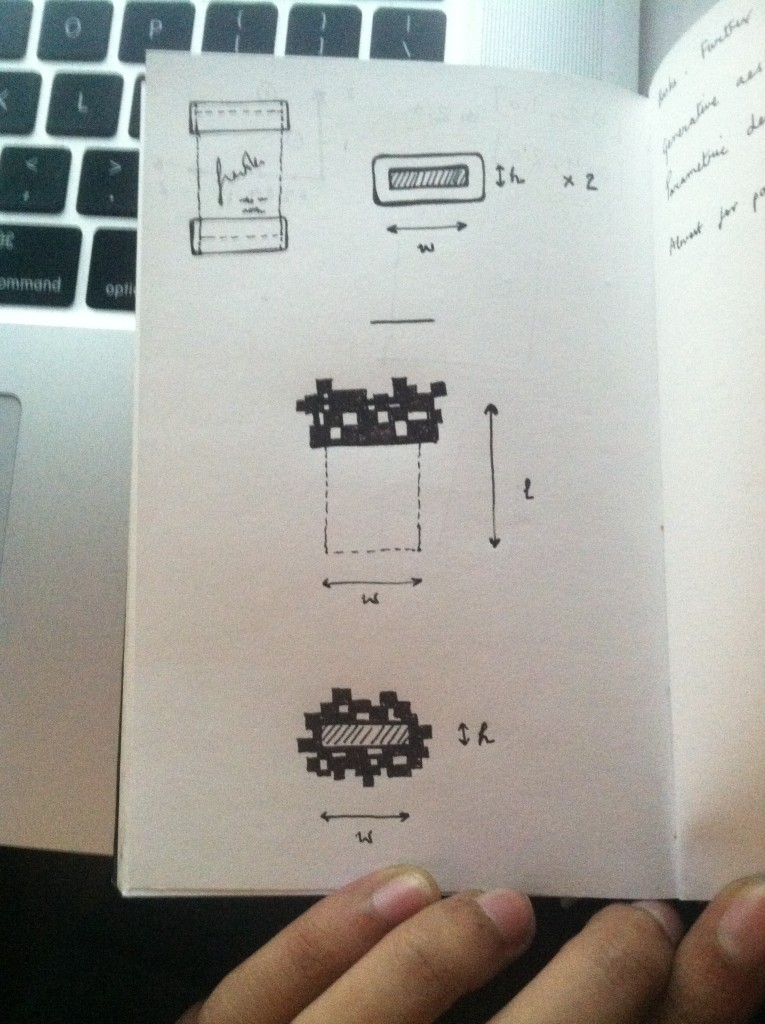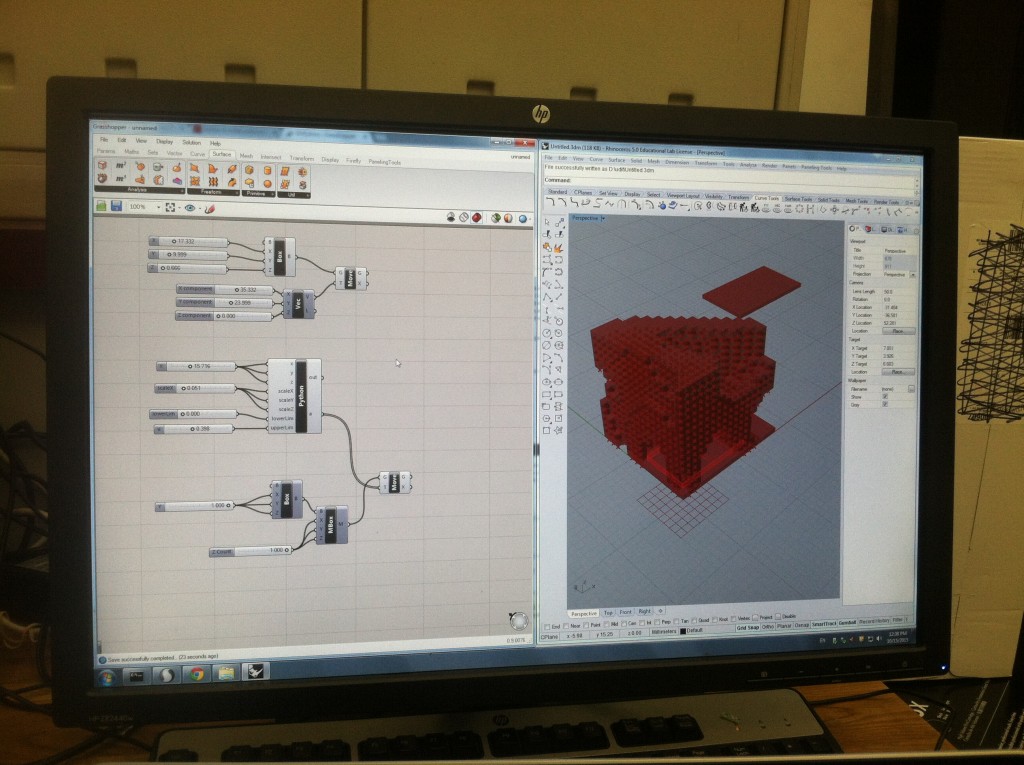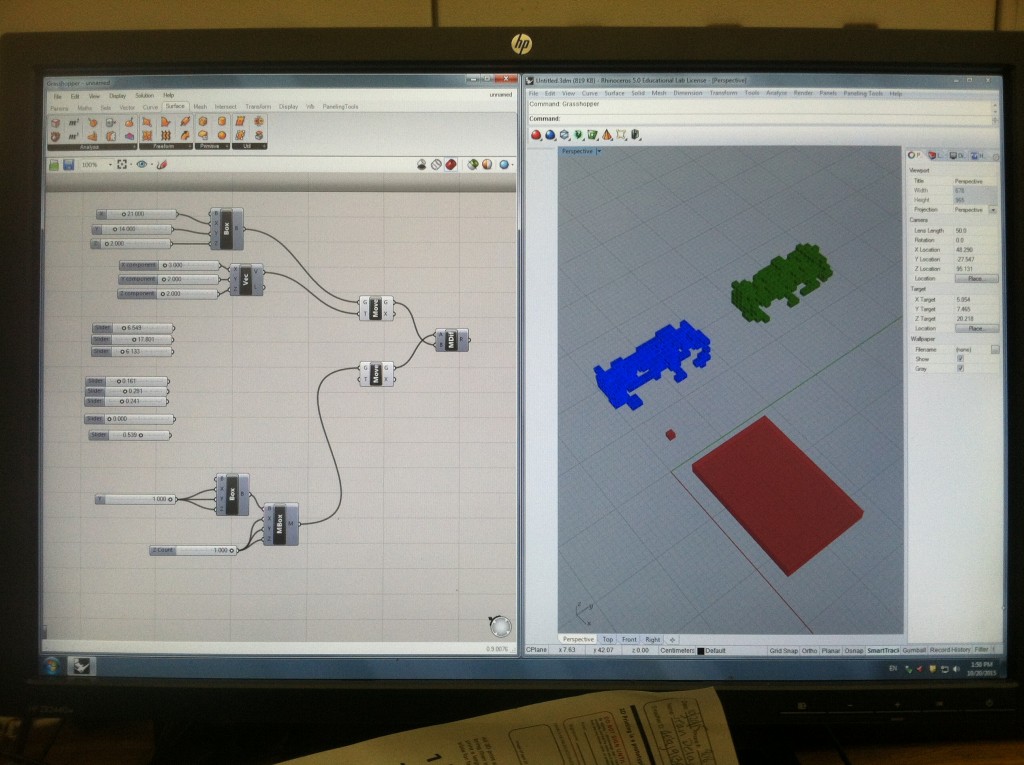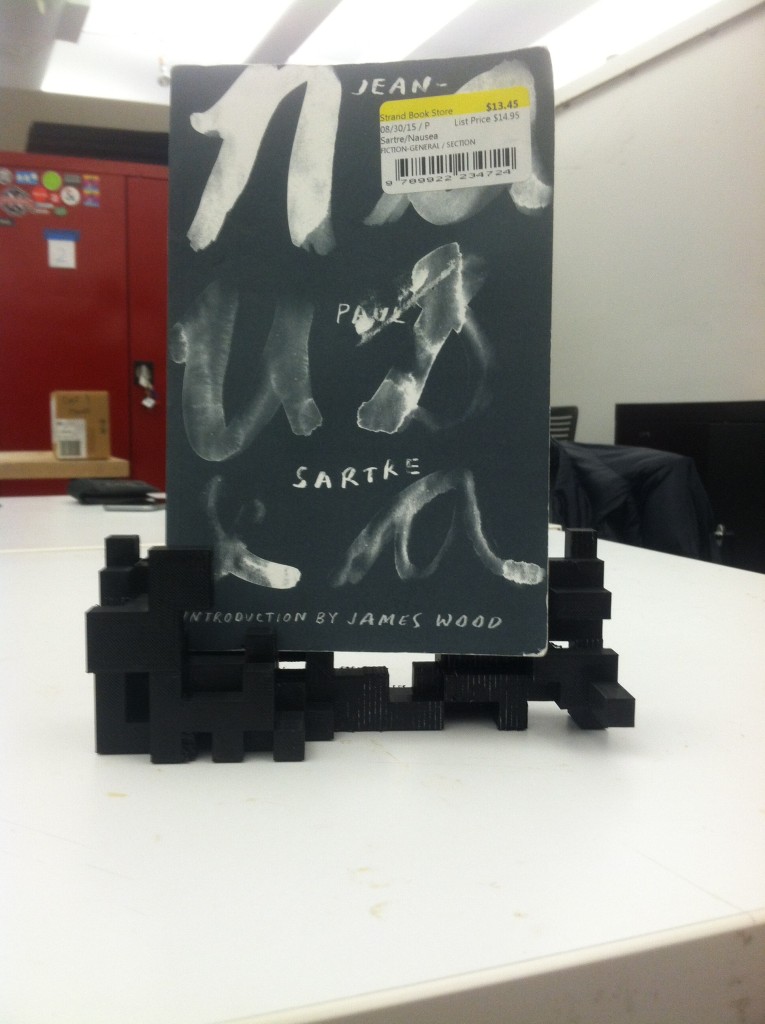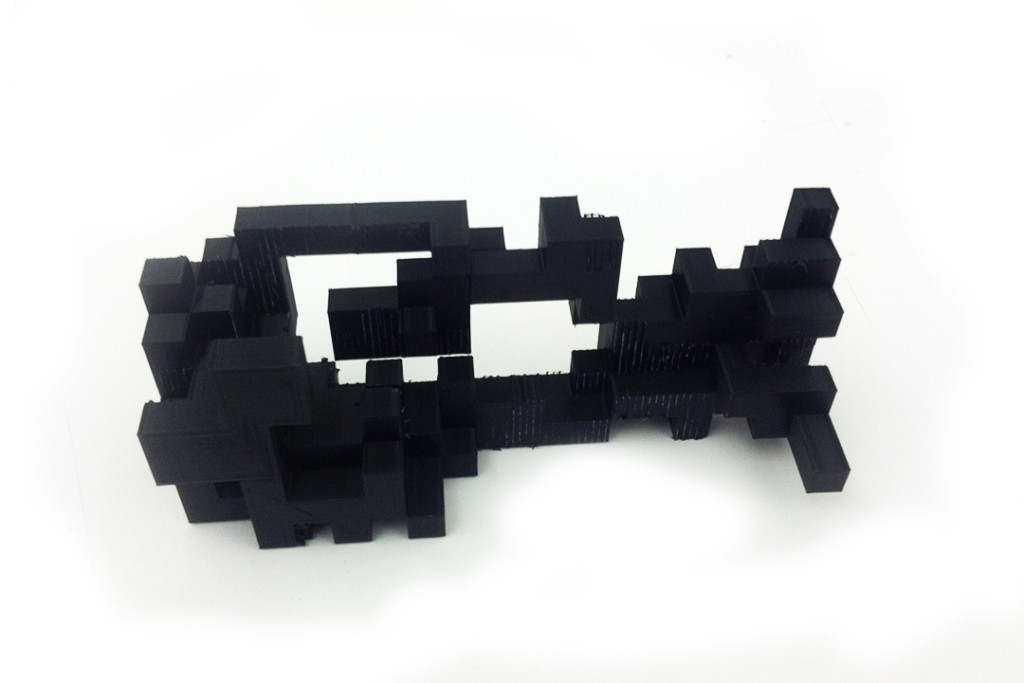Udit // Digital Flo$$
For this assignment, I made generative book enclosures for the edges. The idea stemmed from a need to address the issue of how the edges of the books get folded and torn while carrying them in a bag. So I began by sketching the parametric requirements and the look of the enclosure.
I made a tool in Grasshopper and Rhino in which the user can provide dimensions of their book and the tool will generate an enclosure for them.
The enclosure is composed of several boxes arranged in space according to 3D Perlin noise. I downloaded the Python component in Grasshopper from here. Then I wrote a Python script to use the noise and generate points in the 3D space in Rhino. Then I generated boxes at each of those locations to make the enclosure. I followed this tutorial for using the Python script to generate these aesthetics.
The tool comprises of the following parameters for:
- Book Dimensions – Length, Width, Height
- Enclosure – Location in space (x, y, z), Scale of the boxes (scaleX, scaleY, scaleZ), Noise (lowerLimit, upperLimit)
I measured the dimensions of one of my books and fed the parameters in the tool. I then played around with the variations of noise to give a pattern I liked. It was then sent to the MakerBot for 3D printing.
The results were precise and satisfactory. The allowance kept for the prototype 3D print came out accurate. The application of this tool can be extended further to any kind of cuboidal things which might need generative enclosures. The aesthetics can be used in other parametric designs too.

